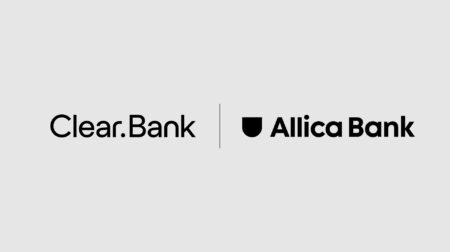What is Bacs? Everything your business should know

Before we dive into Bacs, let’s start with some background on what exactly happens when you make a payment from one bank to another.
Every day, UK businesses and consumers make thousands of transactions. Each of these transactions undergoes a process called ‘clearing’. Rather than transferring actual money between banks, clearing happens before a transaction is settled. In other words, turning an electronic payment request (a promise of payment) into an actual payment where money has moved from one account to another. If central clearing didn’t exist, the UK’s 500+ financial institutions (FIs) would need thousands of connections to transfer funds back and forth. In this world, moving money would be ineffective, inefficient, expensive and carry a significant settlement risk.
To reduce complexity, we have a centralised clearing system that combines thousands of transactions from different FIs to produce net settlement values (the resolution of a bank’s total transactions at the end of the day). In the UK’s clearing system, money moves automatically between the largest FIs (those with the appropriate liquidity needs and risk appetite). A finite number of payment schemes facilitate this movement.
Each UK payment scheme sets out its own rules for moving money. These cover the necessary steps for making payments and provide the processes and infrastructure to settle cleared transactions. Each UK payment scheme has different characteristics. In the first in a series examining these schemes, we’ll look at Bacs.
Bacs is responsible for well over 6.5 billion transactions per year. It’s the most popular way businesses make and receive bulk payments. Typical uses include paying salaries to employees, making mortgage repayments, and sending payments for utilities, subscriptions and insurance premiums.
Despite its prevalence, many consumers haven’t heard of Bacs. That’s because they can use it seamlessly through their bank or another provider without even really knowing which payment scheme their money is moving through. To enable consumers and businesses to send direct debits or receive direct credits without a second thought, financial institutions have either a direct or indirect connection to Bacs.
Bacs was planned to be modernised under the New Payment Architecture (NPA) programme designed to upgrade the current interbank payment systems, including Faster Payments and Bacs. However, with delays to the NPA and the recommendation of the HM Treasury commissioned Future of Payments Review for a new National Payment Vision that ensures these developments deliver their expected benefits, we should expect to see Bacs continue in its current guise for at least the next few years.
There are two kinds of Bacs payments – Direct Debit, where money is drawn from accounts by a third party, and Bacs Direct Credit, where money is deposited into accounts by a third party. Here are their key features:
Direct Debit
Direct Debit enables a business to take money from another bank account on a pre-agreed set of dates or a one-off occasion – money moving out. Consumers and businesses often use Direct Debit to pay for bills or ongoing subscriptions. There were 4.7 billion Direct Debit transactions in 2022, making this the most common type of payment in the UK. ClearBank’s system allows your customers to set up and pay Direct Debits from their bank account.
Bacs Direct Credit
Bacs Direct Credit enables bulk payments to be deposited into another bank account – money moving in. UK salaries are often paid via Bacs Direct Credit, and retailer settlements are another common use case for this payment type. In 2022, there were 2 billion Bacs Direct Credit transactions.
Bacs is open for submission between 07.00 and 22.30, Monday to Friday (excluding bank and public holidays). However, Bacs isn’t instantaneous, with payments settled two working days after submission. This means payments submitted on a Monday will be applied on a Wednesday, while payments sent on a Friday will typically be applied on a Tuesday.
The scheme’s three-day payment cycle works as follows:
- Day one: Payment instructions are submitted to the Bacs system before a cut-off time of 22:30.
- Day two: Payment instructions are processed by the Bacs system and outputted to the destination bank.
- Day three: Payments are cleared, typically in the morning by 07:00. Settlement occurs at around 09:30 at the Bank of England.
Bacs has several significant advantages, contributing to it being the UK’s go-to method for making and receiving bulk payments. These are:
- Bacs Direct Credits can be recalled before 15:45 on the day before they settle.
- Using the Bacs system, users can make high-volume transactions of up to £20,000,000.
- Bacs is the only UK payment scheme to offer a Direct Debit service. All Direct Debits are covered by a Guarantee that offers a refund to the payer in the event of an error in the collection process.
- Bacs can boast lower transaction fees than other payment schemes.
Though it has many advantages, it’s worth noting that Bacs has longer settlement times than other payment schemes, which means it’s not appropriate for time-critical payments.
As a financial institution, moving money for your customers is a given. But the question is how can you connect to the payment schemes, like Bacs, to process payments?
Build a direct connection to the schemes to receive Bacs Direct Credits and pay Direct Debits
Some financial institutions are direct participants in the scheme, meaning they’re responsible for building and maintaining their own Bacs integration. This allows businesses to maintain the tightest data controls and retain complete autonomy over their payment capabilities. But becoming a direct participant in Bacs carries some unique considerations.
Building an integration with Bacs and keeping up with the associated regulatory and testing requirements requires significant capital expenditure. This can be a lengthy process. Once an integration is completed, businesses must maintain a team to support the requirements of the scheme, which can be a significant ongoing cost.
Receive output files via a direct participant
Some direct participants will receive the Bacs output on behalf of a financial institution and will provide files of data for them to process. This still leaves a lot of work for the financial institution to perform.
Connect indirectly via an API
Financial institutions are opting to connect to Bacs via an API provided by a direct participant which can save them time, money and administrative work. ClearBank has built the connection directly to Bacs, which financial institutions easily connect to via our API.
Our single API enables FIs to access other UK payment schemes like CHAPS, Faster Payments and PEXA Pay. This simplifies payments for our clients and frees them up to focus on developing their core products and services.
We power FIs with the single API to pay Direct Debits and receive Bacs Direct Credits for their customers. Here are the key benefits of our solution for Bacs payment service providers:
- State-of-the-art API to Bacs: ClearBank is a direct participant in Bacs so by leveraging our single API, you can connect to the scheme as an indirect participant for easy Bacs clearing and settlement.
- Visibility over upcoming payments: Thanks to our webhooks, you benefit from advance notice of upcoming payments on day two of the Bacs processing cycle.
- Easy Bacs management: Direct Debits and Direct Credits are managed in the ClearBank system. This means we can make pay/no pay decisions for real accounts, while you make these decisions for your virtual accounts.
Rachel Hitchman is a Senior Product Manager at ClearBank covering the UK Local Product Market, including Bacs and Cheques. Rachel has over 8 years of product management experience across multiple fintechs and banks in the UK and South Africa.
Andy Coombes has worked with Bacs payments since 1987 as a software engineer at Telesmart (Microgen), a consultant at Voca, a Client Service Manager at RBS, a Bacs Manager at Citibank and a subject matter expert at TSB. Andy joined ClearBank in 2018 and oversaw the testing and launch of our Bacs product. Andy is currently a payments subject matter expert on our scheme management team.


